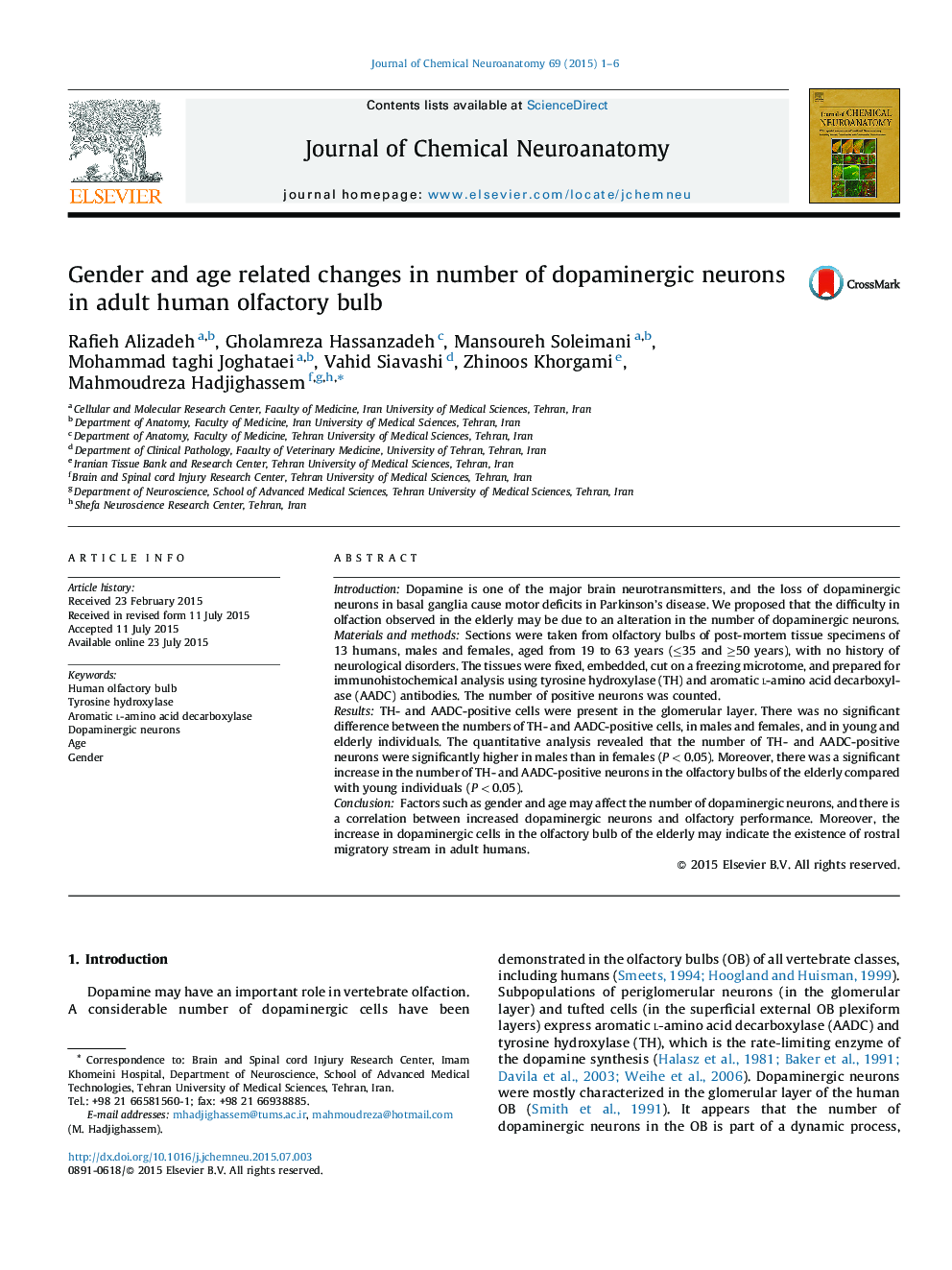| Article ID | Journal | Published Year | Pages | File Type |
|---|---|---|---|---|
| 1988765 | Journal of Chemical Neuroanatomy | 2015 | 6 Pages |
IntroductionDopamine is one of the major brain neurotransmitters, and the loss of dopaminergic neurons in basal ganglia cause motor deficits in Parkinson's disease. We proposed that the difficulty in olfaction observed in the elderly may be due to an alteration in the number of dopaminergic neurons.Materials and methodsSections were taken from olfactory bulbs of post-mortem tissue specimens of 13 humans, males and females, aged from 19 to 63 years (≤35 and ≥50 years), with no history of neurological disorders. The tissues were fixed, embedded, cut on a freezing microtome, and prepared for immunohistochemical analysis using tyrosine hydroxylase (TH) and aromatic l-amino acid decarboxylase (AADC) antibodies. The number of positive neurons was counted.ResultsTH- and AADC-positive cells were present in the glomerular layer. There was no significant difference between the numbers of TH- and AADC-positive cells, in males and females, and in young and elderly individuals. The quantitative analysis revealed that the number of TH- and AADC-positive neurons were significantly higher in males than in females (P < 0.05). Moreover, there was a significant increase in the number of TH- and AADC-positive neurons in the olfactory bulbs of the elderly compared with young individuals (P < 0.05).ConclusionFactors such as gender and age may affect the number of dopaminergic neurons, and there is a correlation between increased dopaminergic neurons and olfactory performance. Moreover, the increase in dopaminergic cells in the olfactory bulb of the elderly may indicate the existence of rostral migratory stream in adult humans.
